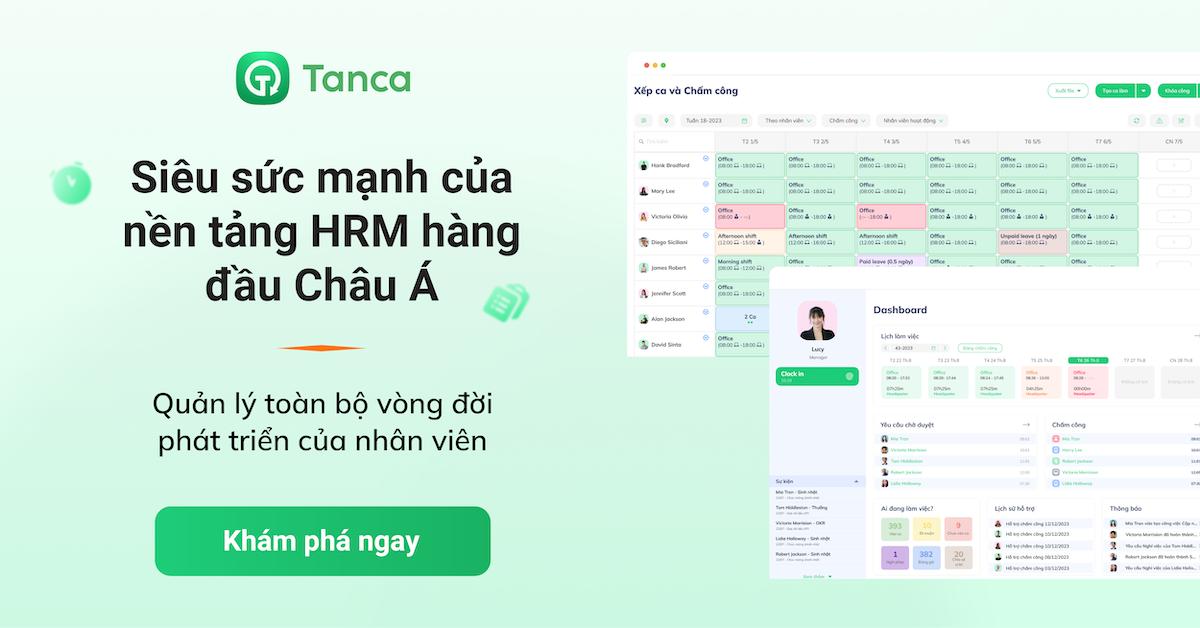For small business owners and HR professionals, recognizing the importance of employee perks is vital for attracting and retaining talent. In today's competitive job market, a strong benefits package can differentiate your business from larger companies and demonstrate your commitment to employee well-being.
Attractive perks, such as healthcare, retirement plans, and flexible work arrangements, can significantly enhance employee retention. When employees feel valued and supported, they are more likely to remain loyal, reducing turnover costs and fostering a positive workplace culture.
Moreover, employee benefits directly impact productivity and job satisfaction. Workers with access to wellness programs and professional development opportunities tend to perform better and remain engaged. Research indicates that businesses offering comprehensive benefits can see productivity increases of up to 13% and retention improvements of 40%.
Investing in tailored perks not only helps build a dedicated workforce but also drives performance and supports long-term growth. To explore how you can effectively implement these benefits and the specific perks that employees value the most, read more below.
What are Employee Perks?

Employee perks are non-financial incentives that organizations provide to enhance employee satisfaction and engagement. Unlike traditional benefits, such as health insurance or retirement plans, perks are often voluntary and designed to create a positive workplace culture. They can vary widely, but common examples include:
- Free meals or snacks
- Subsidized gym memberships
- Flexible work arrangements
- Wellness programs
- Learning and development opportunities
- Commuter benefits
How Can Small Businesses Choose the Right Employee Perks?

Choosing the right employee perks is crucial for small businesses aiming to attract and retain talent effectively. Here are some practical strategies to help you make informed decisions:
Understand Employee Needs
Conduct surveys, focus groups, or informal discussions to gather feedback on what perks employees value most. Understanding the demographics of your workforce—such as age, family status, and lifestyle—can guide your selection.
For instance, younger employees might prioritize student loan assistance or professional development, while those with families might prefer childcare support. Research indicates that 60% of employees consider perks a significant factor in their job satisfaction, making it essential to align offerings with their preferences.
Align with Company Culture
Ensure that the perks you offer reflect your company’s values and mission. For example, if your organization promotes sustainability, consider perks like public transportation subsidies or eco-friendly initiatives.
Engaging employees in the selection process can foster a sense of ownership and ensure the perks resonate with your team. A strong alignment between perks and company culture can enhance employee engagement and loyalty.
Consider Your Budget
Evaluate your financial capacity to offer perks. While some perks, like flexible work hours or remote work options, may be low-cost, others, such as gym memberships or wellness programs, can be more expensive.
Prioritize perks that provide high value without straining your budget. A study shows that businesses with a well-structured benefits package can see a 22% increase in employee satisfaction, demonstrating that strategic investment can yield significant returns.
Consider starting with a few key perks and gradually expanding based on employee feedback and budget availability.
Regularly Review and Adapt
The needs and preferences of employees can change over time, so it’s essential to regularly review your perks package.
Conduct annual surveys to assess employee satisfaction with current offerings and identify new trends or needs.
Being responsive to feedback shows employees that you value their input and are committed to their well-being.
10 Best Employee Perks Ideas For Small Business

When implementing employee perks, small businesses should align with their growth stage and budget. Prioritize perks based on current needs and resources rather than introducing all at once. HR tools like Tanca can help manage and track perks efficiently as your business expands.
1. Flexible Work Hours
Allow employees to adjust their work schedules to better fit their personal lives. For example, offer flexible start and end times, or a compressed workweek (e.g., four 10-hour days). This flexibility can lead to increased job satisfaction and productivity, as employees can better balance their personal and professional responsibilities.
2. Remote Work Options
Offer the ability to work from home, either full-time or a few days a week. Establish clear guidelines and expectations, and provide necessary equipment and tools for employees to work effectively from a remote location. Remote work options can attract talent from a wider geographical area and demonstrate trust in employees' ability to manage their own time and tasks.
3. Health and Wellness Programs
Health and wellness programs are initiatives designed to promote the physical, mental, and emotional well-being of employees in the workplace. These programs can include fitness challenges, mental health resources, nutrition workshops, and preventive health measures such as biometric screenings and flu shot clinics. By offering on-site fitness classes, flexible work arrangements, and employee assistance programs (EAPs), businesses can create a supportive environment that encourages healthier lifestyles and reduces stress.
The benefits of implementing health and wellness programs are significant. Companies can see a 6:1 return on investment due to decreased medical expenses and increased productivity, as healthier employees are often more engaged and effective in their roles. Additionally, approximately 70% of employees enrolled in wellness programs report higher job satisfaction, while 87% consider health offerings when choosing an employer.
4. Paid Time Off (PTO)
Paid Time Off (PTO) is a vital benefit that allows employees to take time away from work without losing income. While some business owners may worry that generous PTO could negatively affect productivity, research indicates the opposite. Employees who utilize their PTO return to work feeling refreshed and more focused, leading to increased efficiency and creativity. Moreover, a structured PTO policy can help reduce unplanned absenteeism, as employees are less likely to call in sick when they know they can take time off for personal needs.
Additionally, PTO contributes to employees' mental and physical well-being, reducing stress and the risk of burnout, which ultimately enhances productivity and engagement. In a competitive job market, a robust PTO policy can also attract and retain top talent, as candidates often prioritize companies that value work-life balance. To address concerns about performance, businesses can set clear expectations for PTO usage, encourage employees to take their allotted time off, and plan for coverage to ensure that workloads are managed effectively.
5. Professional Development
Professional development is a continuous process that enables employees to acquire new skills, knowledge, and competencies to enhance their performance and prepare for future career opportunities. This can include formal training, workshops, conferences, and informal learning through mentorship. Investing in professional development is crucial for both employees and employers, as it leads to significant benefits.
For employees, professional development enhances skills relevant to their roles, increases confidence, and boosts job satisfaction. Research shows that 86% of employees would consider switching jobs for better growth opportunities, while organizations that invest in development see a 34% increase in retention rates. Furthermore, participation in development programs provides valuable networking opportunities, connecting employees with industry peers and potential collaborators.
For employers, prioritizing professional development leads to higher retention rates, enhanced productivity, and a stronger ability to attract top talent. Companies that foster a culture of continuous learning are also better positioned to innovate and adapt to market changes, with research indicating that such organizations are 92% more likely to develop novel products and processes.
6. Employee Discounts
Offer discounts on company products or partner with local businesses for special deals. Negotiate with vendors to provide exclusive discounts for your employees, such as reduced rates on services or products. This perk can save employees money while strengthening their connection to the company.
7. Free Snacks and Beverages
Stock the office with healthy snacks, coffee, and drinks. Provide a variety of options to cater to different dietary preferences and keep employees energized throughout the day. Consider offering a snack allowance or setting up a self-serve snack bar to encourage a relaxed and enjoyable work environment.
8. Team Outings
Organize team-building activities, such as dinners, retreats, or fun outings. Plan events that allow employees to bond and connect outside of the office setting. These outings can range from casual lunches to more structured team-building exercises, depending on your company culture and budget.
9. Recognition Programs
Effective employee recognition programs can significantly boost morale and retention in small businesses. One popular approach is the Employee of the Month program, which honors outstanding employees with certificates or small gifts, motivating others to excel. Additionally, peer-to-peer recognition allows employees to acknowledge each other’s contributions through appreciation notes, fostering a supportive workplace culture.
Other valuable recognition strategies include service awards for tenure milestones, spot bonuses for exceptional performance, and recognition events that celebrate achievements in a festive atmosphere. Public social media shoutouts can also enhance morale, while personalized handwritten notes from managers add a meaningful touch.
10. Child Care Assistance
Offer stipends or partnerships with local childcare centers to support working parents. Provide a child care subsidy or partner with nearby daycare facilities to offer discounted rates for employees. This perk demonstrates your commitment to supporting employees with families and can help attract and retain talent with children.
A Strategic Approach for Small Businesses
When implementing employee perks, small businesses should adopt a strategic approach that aligns with their growth stage and budget. It's important to understand that not all perks can be introduced at once; instead, prioritize based on current needs and available resources. Utilizing HR tools like Tanca can streamline the management and tracking of employee perks, ensuring a smoother implementation as your business expands.
Assess Your Current Situation
Start by evaluating the current employee satisfaction levels and identifying gaps in your existing benefits package. Conduct surveys or hold discussions to understand what perks employees value most. This insight will help you prioritize which perks to implement first.
Set a Budget
Determine a realistic budget for employee perks, considering both immediate and long-term financial implications. Some perks, like flexible work arrangements, may require minimal investment, while others, such as wellness programs or professional development initiatives, might need more substantial funding.
Phased Implementation
Consider rolling out perks in phases based on your business's growth stage. For example:
Phase 1: Start with low-cost initiatives such as flexible work hours, peer recognition programs, and free snacks. These can be implemented quickly and can significantly boost morale.
Phase 2: As your budget allows, introduce more structured programs like professional development opportunities, wellness initiatives, and team outings.
Phase 3: Once your business is more established, consider investing in comprehensive benefits like child care assistance or extensive health and wellness programs.
Monitor and Adjust
After implementing new perks, continuously monitor their effectiveness and employee feedback. This will help you understand what works well and what may need adjustment. Be open to making changes based on employee needs and business growth.
FAQs
How can small businesses determine which employee perks to offer?
Small businesses can determine which employee perks to offer by conducting surveys or focus groups to gather employee feedback on their needs and preferences. Analyzing industry trends and competitor offerings can also provide insights into popular perks. Additionally, assessing the company's budget and resources will help prioritize which perks are feasible to implement.
How can small businesses effectively communicate the available perks to employees?
To effectively communicate available perks, small businesses should use multiple channels such as email newsletters, team meetings, and internal platforms. Creating a dedicated section on the company intranet or employee handbook that outlines all perks and how to access them can also be helpful. Regular reminders and updates about perks can keep them top of mind for employees.
What should small businesses do if they cannot afford certain perks?
If small businesses cannot afford certain perks, they should focus on low-cost or no-cost alternatives that can still provide value. For example, instead of expensive health benefits, they can offer flexible work arrangements or recognition programs. Additionally, businesses can explore partnerships with local businesses to provide discounts or services at a reduced rate for employees. Prioritizing employee feedback will help identify the most valued perks that fit within the budget.










